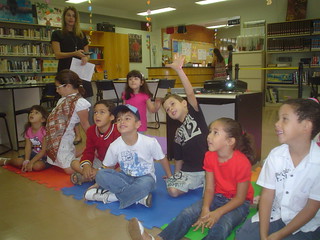What do you do when your students fail their tests? Do you blame them or yourself? I used to blame myself, but I’ve learnt that the best alternative, at least for me, was to stop assigning blame and start thinking outside the box.
It’s natural to think that there are predetermined roles in the classroom and that simply by enrolling or being in the classroom, everyone will know what to do. That is exactly how I thought things were: I would go to a specific classroom in a specific time and so would students; I would teach and they would learn. It was only when I was confronted with terrible grades — only 3 out of 10 students had passing grades on their first written test — that I realized I was wasting a great opportunity.
My first reaction was to think I was a terrible teacher. After all, I am an absolute beginner, having only less than two years of experience. I spoke to several senior teachers and asked for advice. The first one I received was to check what exactly the students’ mistakes had been. Had they all made the same mistakes? If yes, I needed to check the way I had been teaching them. If not, I should check the students’ academic records to see if they had had difficulties in the previous levels. After some research, I realized two things: all students, even the ones who had good grades, made the same kinds of mistakes; and none of them had had a history of below average grades.
It’s important to note that students in the lower intermediate level get a really bad reputation. They are said to be the “weakest links”; students who didn’t do well on their replacement tests. I kept hearing that those bad grades were just what I should have expected. I felt extremely uncomfortable to just accept that these students were weak and that there was nothing I could do. In my mind, If I had been a better teacher, they would have done better. Besides, I had looked into their academic records and I could not find the proof that they were just bad students.
Another thing I was told by senior teachers was that there is a large gap between the Teens course and the Lower Intermediate course. In the latter, tests demand a lot more from students’ cognitive abilities. In fact, the one difficulty all students had was with listening and reading comprehension. It wasn’t something I had taught them; I had been too focused on teaching grammar and vocabulary.

My first step, after gathering advice I had received from several senior teachers, was to deliver the news to the students about their low performance and, at the same time, motivate them to do better on their next test. It seemed impossible! But the teachers I spoke to knew me and trusted me. They said I could do it. So I asked students how they had prepared for the test, how they thought they did, and if it had been easy or hard. I spoke to them in Portuguese and they opened up very quickly. I found out a lot from my students that day. They are under a lot of pressure from their parents, their regular schools and themselves. They also thought, same as I did, that teaching and learning were automatic processes, and all they had to do to get a good grade was to “sit down and study”. For them, given how they did on their test, it hadn’t been enough. I thought they were being too hard on themselves, but then again, I realized I had been too hard on myself too.
I needed to take the focus out of this blame game. I asked the students to trust me and to help me help them. Thinking about it now, I noticed that what I did was to ask them to stop looking for someone to blame and start focusing on learning. I remembered something that my coach had told me on my first semester at CTJ: “We a have to teach students how to learn”. So based on that and also on the things I have been learning at the TDC - Teacher Development Course, I started changing the way I planned the lessons for that specific group.
The first thing was to teach them strategies such as scanning and skimming. I showed them how to look for information, how to look for clues in exercises, patterns in sentences, and in essence, how to develop strategies to solve the exercises. I also turned the wrap up stages of the lessons into mini projects. For example, after a lesson about the differences between past simple and past continuous, I told the students to create a story using only three sentences. They all sat down on the classroom floor to make a poster together, and it was the first time I saw them actually happy to be in class.

Basically, I started focusing on making the students feel independent and in control of their own learning. I stopped simply giving them information and started giving them the tools to get there themselves. I noticed a complete change in behavior. What I had thought was just normal teenage behavior during a class at 2pm had basically been lack of motivation. Before, they were barely present in class, mostly quiet and unresponsive. They didn’t do their homework and they didn’t answer my questions. They also spoke a lot of Portuguese. Now, they try harder to speak English, they use the language being presented, they respond faster to eliciting. And, I’m relieved to say, out of all the students, only one had a below average grade on their second test. It was not a miracle change though, — the lowest passing grade was 76 — but I’m counting my blessings!
This had been the one group I dreaded meeting every week. They made me feel like a real failure. Now that they are motivated, they are the best part of my week. I’m glad I stopped focusing on laying blame and decided to trust the advice of senior teachers: I learned that motivating my students was the best way to motivate myself.











